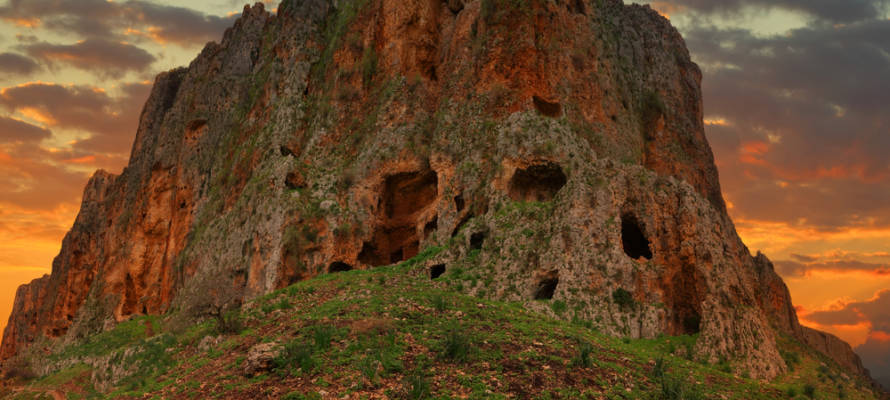Archaeologists found inside hundreds of caves in the Galilee ancient coins, jars, lamps, weapons and even ritual baths dating back to the Roman era.
By United with Israel Staff
For the past 15 years, Dr. Yinon Shivtiel, 70, a senior lecturer at Safed Academic College and a senior member of the Israel Cave Research Center (ICRC) in the Galilee, has identified important sites relating to the Great Jewish Revolt against the Roman Empire, about 2,000 years ago in the first century CE.
His findings corroborate reports written by Josephus Flavius (Yosef ben Matityahu). Josephus was the chief commander who led the Jewish revolt in the Galilee at the time, but later defected and became a key historian recording Roman history.
Shivtiel’s findings appeared in the journal Ancient Near East Today, published by the American Schools of Oriental Research last month.
According to Josephus’ books, “The Jewish War” and “The Life of Josephus,” he arrived in the Galilee just prior to the outbreak of the Great Revolt and fortified 18 cities. Archaeologists have surveyed or excavated five of these, Tiberias, Arbel, Acchabaron Rock (Akhbari), Mero and Caphareccho (Kfar Ata). Although Caphareccho remains unidentified, it fits the description of Huqok, a Jewish settlement recently excavated by Jodi Magness.
Each of these settlements is next to or near a steep cliff dotted with natural caves. This matches Josephus’s description that village fortifications were “very rocky.” He specifically mentions the “Arbel caves” and the fortification of “Akhbara Rock.” Also noted are “walls [of] the caves in Lower Galilee in the neighborhood of the lake of Genesareth.”
Shivtiel postulates that the 900 caves he explored in the Galilee “served as one of the defense methods of the Galilean Jews during the Second Temple period.”
Shivtiel’s “research combines history and archaeology with an additional element – speleology, the study of caves,” and many of the places he studied could be reached only by rope-descent. He found, “The inner chambers of these caves had been hewn and prepared for the Jews who lived close to the Arbel settlement and similar features were found in the other four settlements, Tiberias, Caphareccho, Acchabaron, and Mero.”
There were two types of caves discovered and researched: “cliff shelters” functioned as protection against the Roman invasion,maybe while “refuge caves” were hiding complexes excavated earlier than the revolt and found in the Judean desert as well as the Galilee. Many of these contain intricate systems of very narrow spaces and tunnels requiring crawling from room to room for Jews hiding and escaping from the Romans.
“Archaeological evidence from some of these complexes dates their use primarily to the Roman period, especially to the first and second centuries CE at the time of the First Jewish Revolt (The Great Revolt) and perhaps as a preparation for the Bar-Kokhba Revolt even if the Galilee was not actively involved in it,” Shivtiel said.
Shivtiel found many small plastered cisterns to collect water in the Arbel cliff shelters. Five caves contained hewn Jewish ritual baths (mikva’ot). Shards from cooking pots and vessels for stockpiling and storage were discovered dating back to Roman times. Dozens of Hasmonean coins were also found, one of which was a rare “First Jewish Revolt” coin.
Tabs had been cut into the stone in front of very steep caves to enable stability of ropes used for rappelling. Caves also had niches for oil lamps and some had olive presses.
Shivtiel plans to continue exploring this fascinating and ancient region for years to come.
